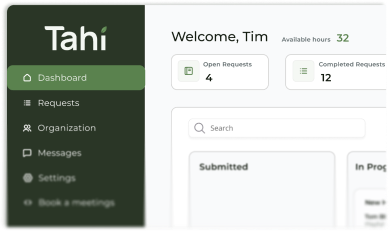Web Design
The Calm UI: Designing for Trust, Not Tricks
Stop chasing fleeting clicks with manipulative designs. Discover how a calm, confident UI builds lasting customer trust and delivers a 9,900% ROI.

The Hidden Cost of a Click
Have you ever felt a little bit tricked online? That moment you realise you’ve been signed up for a newsletter you never wanted, or a countdown timer rushes you into a purchase you’re not sure about. It’s a frustrating feeling, a small betrayal of trust that leaves a sour taste. In the design world, these manipulative techniques are known as dark patterns, and they’re designed to do one thing: get a click at any cost. They are the digital equivalent of a high-pressure salesperson who cares more about their commission than your needs.
These tricks are everywhere, often hiding in plain sight:
- Roach Motel: It’s incredibly easy to sign up for a service, but when you want to cancel, the path to the exit is a confusing, multi-step maze.
- Confirmshaming: This uses guilt to nudge you into an action. Think of a pop-up with two options: “Yes, I want amazing discounts!” or the much smaller, greyer option, “No thanks, I prefer to pay full price.”
- Bait and Switch: You click a button expecting one outcome (like downloading a free guide), but another, undesirable thing happens instead (like starting a software installation).
Here at Tahi, we think that’s a terrible trade. You might get a short-term lift in your CRO metrics, but you erode something far more valuable: your customer’s trust. A user who feels tricked is a user who won’t come back. In fact, a staggering 88% of users won't return to a website after a bad experience. That’s why we advocate for the opposite approach: the Calm and Confident User Interface (UI). It’s a design philosophy centred on honesty, clarity, and respect. It’s about building a digital experience that feels good, one that turns visitors into loyal advocates, not just fleeting statistics.
The Staggering Business Case for Calm Design
Choosing trust over tricks isn’t just an ethical stance; it’s one of the most powerful financial decisions a business can make. The numbers are almost unbelievable, but they consistently prove that investing in a genuine, positive User Experience (UX) delivers incredible returns.
The Immediate ROI of Good UX
Let’s start with the headline figure: for every $1 invested in UX design, the average return on investment (ROI) is a massive $100. That’s an ROI of 9,900%. This isn’t about flashy animations or trendy layouts; it’s about creating a clear, intuitive, and trustworthy journey for your customers. A well-designed UI can improve conversion rates by 200%, and when that's part of a holistic UX strategy, that number can jump to 400%. These aren't results you get from a sneaky pop-up; they're the sustainable outcome of building real, digital trust.
Trust as a Long-Term Brand Asset
Beyond immediate conversions, a calm UI builds brand equity. When users feel respected and understood, they stick around. This is reflected in customer retention, where improving the user experience enough to increase retention by just 5% can boost profits by as much as 95%. Why? Because trust increases Customer Lifetime Value (CLV). A customer who trusts you is more likely to buy again, explore other services you offer, and recommend you to others. Dark patterns do the opposite; they maximise a single transaction at the expense of the entire relationship.
The Competitive Advantage of Calm
In today's crowded market, a calm and confident user experience is no longer a luxury, it's a key competitive differentiator. Businesses are catching on, with 77% of brands believing that customer experience is vital for setting themselves apart. When a competitor is using confusing layouts and frustrating pop-ups, your clear, simple, and respectful interface becomes a haven. It’s an immediate signal of quality and professionalism that can win customers before they’ve even read a word about your product. Our productised plans are structured to build this kind of long-term value, focusing on quality design that pays for itself many times over.
The Five Pillars of a Trustworthy Interface
So, how do we build a 'calm' UI? It’s not about one single element, but a combination of thoughtful principles that work together to make the user feel secure, respected, and in control. These are the foundational pillars we build on for every project.
1. Radical Clarity and Honesty
Trust begins with understanding. A confusing interface creates anxiety, while a clear one builds confidence. This means using plain language, not corporate jargon. Your pricing should be transparent, your contact information easy to locate, and your calls to action should say what they do. In practice, this looks like form fields with clear labels, buttons that accurately describe their function (“Download the PDF” instead of just “Submit”), and a logical information architecture (IA) that feels intuitive. There should be no surprises, no hidden fees, and no confusing terms buried in the small print. Honesty in design is about setting clear expectations and then meeting them, every single time.
2. Deep Consistency and Predictability
Imagine driving a car where the brake pedal is in a different place every time you get in. It would be a stressful nightmare. The same is true for a website. A consistent experience is a trustworthy one. This is where a robust Design System becomes essential. It’s a single source of truth that ensures buttons, forms, headings, and interactive elements look and behave the same way across the entire site. When users learn how one part of your site works, they can confidently apply that knowledge everywhere else. This predictability reduces their cognitive load, making the experience feel effortless and reliable, and preventing the kind of design inconsistencies that subtly erode trust.
3. Reliable Performance and Speed
Trust isn't just about what a site looks like; it's about how it works. A slow, buggy, or broken website immediately signals a lack of care and professionalism. We’ve all been there, waiting for a page to load, only to give up. The data shows we’re not alone: 53% of mobile users will abandon a site that takes longer than three seconds to load. A fast, stable, and well-built website is a fundamental trust signal. It shows respect for the user's time and proves that the quality of your brand goes beyond the surface. It’s a core reason we build on Webflow, a platform that allows us to create high-performance sites without compromise, a topic we explore in our article about what quality Webflow development really means.
4. Accessibility as the Ultimate Trust Signal
This might be the most important pillar of all. Designing an inclusive and accessible website is a powerful statement. It says, “We care about everyone.” When you ensure your site can be used by people with disabilities by following standards like WCAG, you are demonstrating empathy on a profound level. An inaccessible website excludes people, which is a fundamental breach of trust. Providing high-contrast text, keyboard navigation, and descriptive alt-text for images isn't just a technical task; it's a human one. As I’ve written before, accessibility isn’t an add-on, it’s a core part of good design. Prioritising it shows that your brand is thoughtful, considerate, and truly for everyone.
5. Empowerment and Control
The final pillar is about putting the user in charge. A trustworthy interface gives users control over their experience. This means easy-to-find unsubscribe buttons, clear cookie preferences, and the ability to close a pop-up without a fight. It’s the direct opposite of the ‘Roach Motel’ dark pattern. When you make it as easy for a user to leave as it is for them to join, you send a powerful message of confidence. You’re telling them you believe your value is strong enough that you don’t need to trap them. This respect for their autonomy is a cornerstone of a calm and confident digital relationship.
Building Belief in an Automated Future
As technology like AI becomes more integrated into our digital experiences, the need for transparency becomes even more critical. Users are becoming more aware of how their data is used, and trust is fragile. We are moving towards a future where interfaces will need to explain themselves. Industry projections show that by 2035, 80% of organisations using AI in UX/UI will use Explainable AI (XAI) tools to make their systems more transparent.
This principle extends beyond AI. It’s about being upfront in your privacy policy, clear about cookie usage, and honest about how you personalise experiences. As designers and developers, our role is to be advocates for the user. As one piece of research puts it, “security protects data, but design protects belief.” It’s our job to build interfaces that people can believe in.
Our Commitment to Calm at Tahi Studio
This philosophy is at the very heart of how we work. At Tahi Studio, we refuse to use dark patterns. We believe that lying to a user to get a click is a betrayal that causes long-term brand damage, and it’s a line we will not cross. It goes against our core value of honesty and what we call the 'Greater Good Principle', where every decision must serve the best interests of our clients and their customers. Our entire process is built on transparency, creating a partnership where our clients feel as respected as their end-users.
We focus on building websites that Google trusts by adhering to principles like E-E-A-T (Experience, Expertise, Authoritativeness, and Trustworthiness), because we know that what’s good for the user is ultimately what’s best for business. A calm, confident UI isn't just a design choice; it's a reflection of a brand's character. It’s about choosing to build a sustainable business on a foundation of respect, not on a house of cards made from manipulative tricks. It stops shouting for attention and starts earning it through quiet confidence and genuine value. It’s a shift from designing for clicks to designing for confidence, and it’s the most powerful way to build a brand that lasts.
If your website feels more stressful than serene, it might be time for a change. Get in touch for a free, no-obligation site audit, and let's build a digital experience your customers will trust and love.







